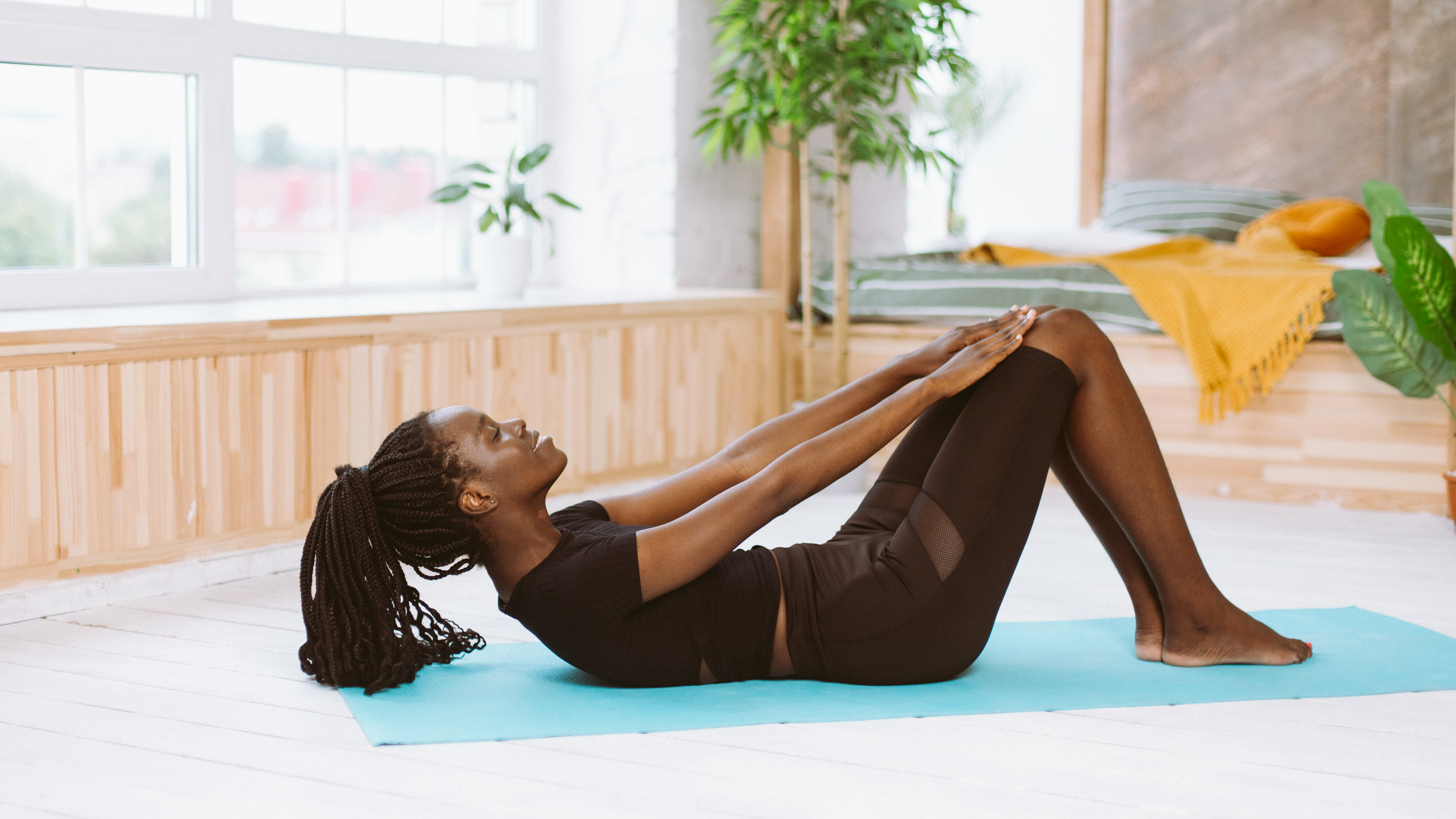A Pilates instructor says this is the one move she recommends doing to "promote a healthy spine"
We asked experts how to perfect the move and how often it should be done


Our spine provides us with the structure, support and stability we need to go about our everyday tasks. It's important to keep it strong and flexible to protect it from injury.
Standing more and sitting less will help your spine stay healthy, but so will practicing exercises that stretch and strengthen your back. Certified Pilates instructor Jenna Mok says there’s one particular move she recommends if you're short on time and want to mobilize your spine—and that’s the Pilates roll-up.
The exercise involves rolling up from a lying position to a seated position and repeating. It can be done anywhere and takes minutes to perform.
Stott Pilates eco-friendly mat: $44.99 at Dick's Sporting Goods
Pilates mats are thicker than yoga mats, so that they can support your spine and joints during moves like the roll-up. This is a well-priced option from Dick's, coming in at less than $50.
What is the Pilates roll-up?
A post shared by Back pain relief, Spondylolisthesis, Scoliosis tips (@movewithjenna)
A photo posted by on
"The roll-up is a form of spinal joint mobilization," says Ellie Richardson, a chiropractor and Pilates instructor at Gymbox. "In our spine, we have a joint on either side of the vertebra called a facet joint and these can sometimes lock up or get stiff if we stop moving. By rolling up or down we aim to mobilize these joints with segmental flexion of the spine to keep these facets happy."
According to Richardson, to master the move, you should:
- Lie flat on your back with your arms reaching overhead on the mat. Engage your core and inhale while slowly lifting your arms up toward the ceiling, keeping them shoulder-width apart.
- Begin to curl your head, neck, and shoulders off the mat as you exhale, rolling up one vertebra at a time. Reach toward your toes as you continue to lift. Use your core to lift your upper body fully off the mat, rounding your spine into a ‘C’ shape as you inhale and reach for your toes.
- Exhale and slowly roll back down to the mat, one vertebra at a time.
Try to complete between 5-8 repetitions around 3-4 times a week. "This consistency will give your muscles and joints time to adapt and strengthen without overdoing it," Mok explained to Fit&Well.
"Regular practice is key to improving spinal health and maintaining a strong, pain-free back."
Start your week with achievable workout ideas, health tips and wellbeing advice in your inbox.
What are the benefits of the roll-up?
Pilates can improve your flexibility, build strength and improve your balance. But Mok says this move specifically engages the abdominal muscles—particularly the obliques, and transverse abdominis—to build core stability.
"It also helps stretch the hamstrings and works the pelvic floor and lumbar joints, promoting better flexibility and posture," she notes. "Plus, the controlled rolling movement of each vertebra helps maintain a healthy, flexible spine."
If you’re new to Pilates, you may wish to try a variation of this move. To make the roll-up more accessible, Mok recommends slightly bending your knees, using a band or towel around your feet for extra support while you roll up, or holding light hand weights (around two pounds). "The weights can actually help guide you through the roll-up by adding a bit of momentum, making it easier to complete the movement," Mok explains.
Becks is a freelance journalist and writer with more than 7 years of experience in the field. She writes health and lifestyle content for a range of titles including Live Science, Top Ten Reviews, Tom’s Guide, Stylist, The Independent, and more. She also ghostwrites for a number of Physiotherapists and Osteopaths.
Health has been a big part of Becks’ lifestyle since time began. When she’s not writing about the topic of health, she’s in the gym learning new compound exercises. And when she’s not in the gym, she’s most probably reading.

